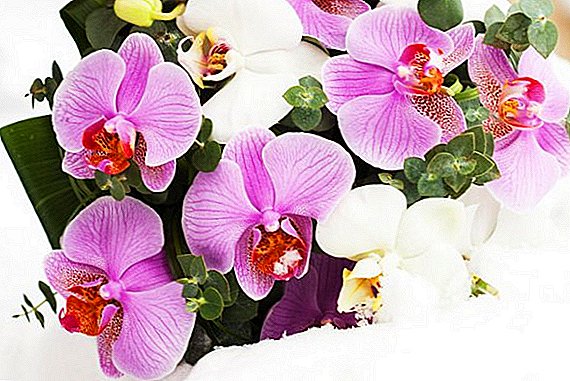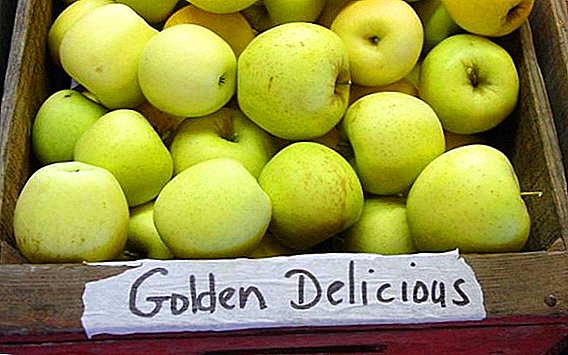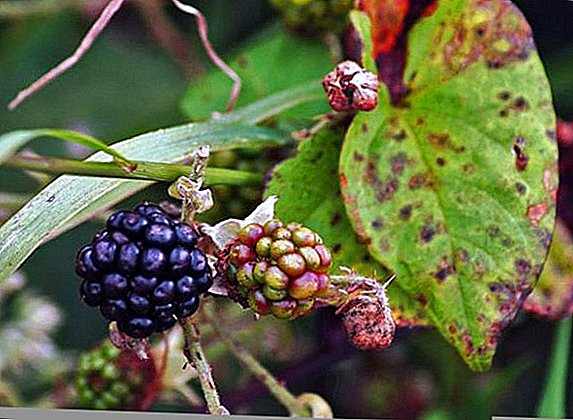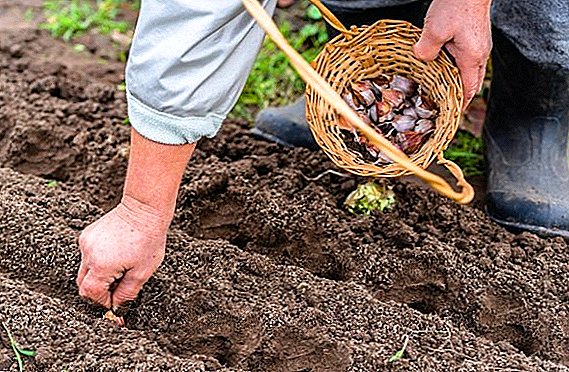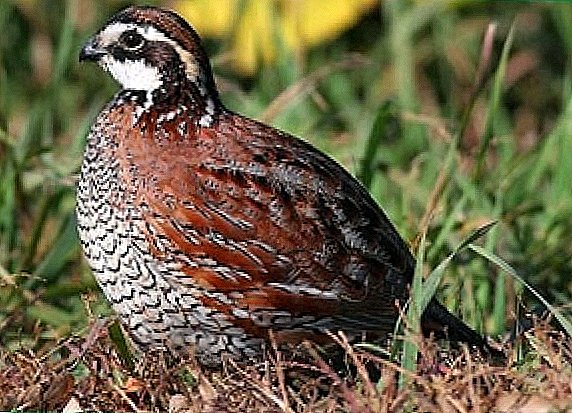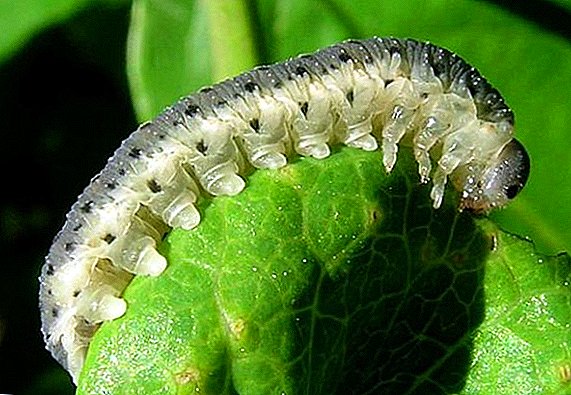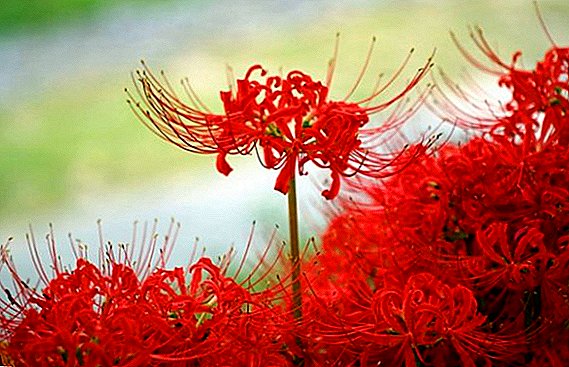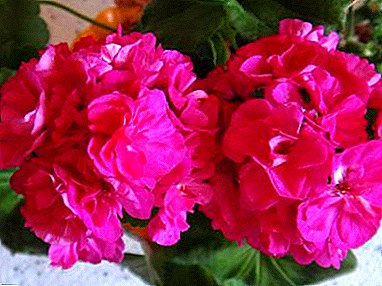
Pelargonium, thanks to its beautiful flowers and non-capricious nature, quickly gained popularity among flower lovers and today it adorns many houses and apartments.
Literally, the name of the plant is translated as "the beak of a stork" because of the fruits resembling the beak of this bird. What kind of care does pelargonium need?
Description and history of occurrence
Pelargonium is a herbaceous perennial plant belonging to the geranium family and brought from South Africa to Holland and then to France and England. The flower has upright, slightly branched stems and reaches a height of 30-80 cm. The shape of the leaves is different for each variety of pelargonium. The inflorescences are umbrella-shaped, they can have as few or many flowers of different shades (you can learn about different varieties of pelargonium, the principles of care, as well as see photos of flowers here).
Pelargonium has an antibacterial and soothing scent. In addition, it is believed that the flower brings understanding to the family. Read more about the healing properties of pelargonium in our article.
Important! The main difference from cold-resistant garden geraniums is that pelargonium is a thermophilic and domestic plant.
How to grow a flower?
Pelargonium is an unpretentious plant, but there are still some requirements for growing and caring for it at home.
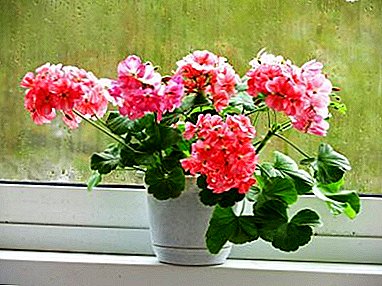 Soil and pot. The plant prefers a well-drained soil consisting of compost, peat, humus and sand, which has a neutral and slightly alkaline reaction, which is provided by the addition of ash. The pot should be small in size (in a tight container, pelargonium blooms more luxuriously) and have drainage holes.
Soil and pot. The plant prefers a well-drained soil consisting of compost, peat, humus and sand, which has a neutral and slightly alkaline reaction, which is provided by the addition of ash. The pot should be small in size (in a tight container, pelargonium blooms more luxuriously) and have drainage holes.- Watering. It is best to focus on the condition of the soil - to water the plant only when it dries. In case of a long stay of a flower in the overwetted soil, its root system rottes. Spray the leaves of pelargonium is not necessary.
- Lighting. This flower loves the light and grows remarkably on the sunny windowsills, but it also feels good in the penumbra. However, if there is insufficient lighting, the stem of the plant may become bare.
- Temperature. For normal development and flowering plants need a temperature of up to +20 degrees, the minimum allowable figure - 10-12 degrees of heat.
- Crop. With the help of pruning you can achieve the formation of a beautiful compact crown, the growth of lateral shoots and the appearance of inflorescences, lush flowering and get planting material. Pruning is best done in autumn or spring, but if necessary - at any time of the year. Place slices to sprinkle with crushed coal or cinnamon powder.
- Topping. So called the process of removing the tops of young seedlings to enhance the development of lateral shoots to form a shrub from the plant. As a rule, pinching is done at the beginning of spring, but when necessary, when required. Details on how to pinch and trim the pelargonium we told here.
- Top dressing. Pelargonium needs to be fed throughout the whole year, except for winter - the period of rest. In the spring and summer period, every 14 days to apply fertilizers containing potassium, magnesium and nitrogen. You can purchase ready-made fertilizer or cook it yourself by mixing the minerals in equal parts. However, before flowering the nitrogen content should be reduced, and potassium - to increase.
Attention! Before feeding the plant must be watered, otherwise there is a risk of burning the root system.
Breeding methods
Pelargonium breeds in three ways:
 seeds - To sow the seeds you need in the period from December to February and wait for seedlings after three weeks;
seeds - To sow the seeds you need in the period from December to February and wait for seedlings after three weeks;- dividing the bush - you need to dig a bush, gently divide it, plant each part in a separate container, then slightly compact and pour the soil;
- cuttings - it is necessary to prepare cuttings up to 10 cm long (in the case of a dwarf variety - up to 3 cm), cutting healthy and strong shoots, then plant them in a pot with drainage at the bottom and soil consisting of peat, perlite, compost and calcined garden soil, compact the soil near the cutting and wait for the roots to appear in 2-3 weeks.
Cuttings can give roots and if they are placed for 2-3 weeks in water in a warm room.
How to breed from seeds?
At home, pelargonium is grown from seed, and even newcomers to floriculture can handle it.
The process of growing plants from seed step by step:
- select the seeds, paying attention to their appearance: they should be large, dense, have an oblong shape and brown matte color;
- to get good shoots, you need a lot of light, so it is better to plant it not earlier than the beginning of February or to use additional artificial lighting;
- reduce the time of germination of seeds can, removing part of their shell, thereby ensuring access of nutrients;
- the soil can be purchased at the store, making sure that it is not oversaturated with minerals, or you can cook it yourself by mixing one part of peat, one part of river sand and two parts of sod land;
- Pour the soil warmed up to +22 degrees into the prepared containers and moisten it with warm water;
- after 2 cm from each other, make indentations and place seeds in them;
- sprinkle them with soil and moisten;
- to cover containers with foil, after having made holes in it for ventilation;
- air temperature after sowing should not exceed +22 degrees, and after the seeds germinate the maximum allowable indicator - 20 degrees heat;
- after emergence of shoots to remove a film and to transfer capacities to a window sill;
- in order to form a viable root system, it is necessary from time to time to loosen the soil and replant the seedlings into a larger container with new soil;
- to obtain a compact bush, the escape of pelargonium must be pinned after the fifth leaf appears on it.
Possible problems and pest control
The main diseases of the plant:
 Odema or edema. The disease causes overmoistening of the soil and is expressed in the formation of growths on the leaf plates. It is necessary to reduce watering and remove the affected leaves.
Odema or edema. The disease causes overmoistening of the soil and is expressed in the formation of growths on the leaf plates. It is necessary to reduce watering and remove the affected leaves.- Verticillary wilting. This disease is fatal to the flower. It is necessary to destroy the diseased plant and cut off the shoots with signs of the disease, treat the plants with biofungicide trichodermine.
- Gray rot. The leaves turn yellow and wither, brown spots appear on the base of the plant, and a gray fungus can be found in the disease foci. It causes gray rot in excess water and high nitrogen content in fertilizer. It is necessary to cut the affected parts of the plant, process the flower with fungicides and transplant it into a new soil and pot.
- Stem and root rot. The disease occurs due to waterlogging and low acidity of the soil. The root collar turns black and rots, the leaves become pale, and then turn yellow and wither. The plant should be treated with "Fitolavin" or "Biporam".
- Stem and root late blight. This fungus is transmitted to the ground, but can be transported through the air between plants, because of it pelargonium fades and decays. The disease develops due to high humidity. Plant growth slows down, and the leaves turn pale, which looks like a lack of moisture, but with an increase in watering the fungus grows, multiplies and affects all branches.
It is possible to cure a plant at an early stage of infection by treating it with Bordeaux liquid, removing the affected parts and necessarily transplanting it into sterile soil and a pot.
Problems with growing:
- platinum yellowing - It is probably caused by root rot, you need to transplant the plant;
- the edges of the leaves turn yellow - The problem is in the wrong care, should regulate the mode of irrigation, air temperature, fertilizer;
- lack of flowering - most likely, there was a stagnation of moisture or the flower is not enough light, you need to reduce watering and move the plant to the south side;
- stunting - it is possible that the acidity of the soil is increased (it should not exceed 5.5pH) or the pot has become too small for a flower.
The main pests of pelargonium - aphid and whitefly, you can fight them using insecticides sold in flower shops. Learn more about the diseases and parasite of the plant, as well as about the prevention and control of them at home here.
Pelargonium is not a very whimsical plant with the cultivation and reproduction of which, subject to the instructions and advice, even an inexperienced florist can handle and this flower will delight the owners and decorate the space.


 Soil and pot. The plant prefers a well-drained soil consisting of compost, peat, humus and sand, which has a neutral and slightly alkaline reaction, which is provided by the addition of ash. The pot should be small in size (in a tight container, pelargonium blooms more luxuriously) and have drainage holes.
Soil and pot. The plant prefers a well-drained soil consisting of compost, peat, humus and sand, which has a neutral and slightly alkaline reaction, which is provided by the addition of ash. The pot should be small in size (in a tight container, pelargonium blooms more luxuriously) and have drainage holes. seeds - To sow the seeds you need in the period from December to February and wait for seedlings after three weeks;
seeds - To sow the seeds you need in the period from December to February and wait for seedlings after three weeks; Odema or edema. The disease causes overmoistening of the soil and is expressed in the formation of growths on the leaf plates. It is necessary to reduce watering and remove the affected leaves.
Odema or edema. The disease causes overmoistening of the soil and is expressed in the formation of growths on the leaf plates. It is necessary to reduce watering and remove the affected leaves.